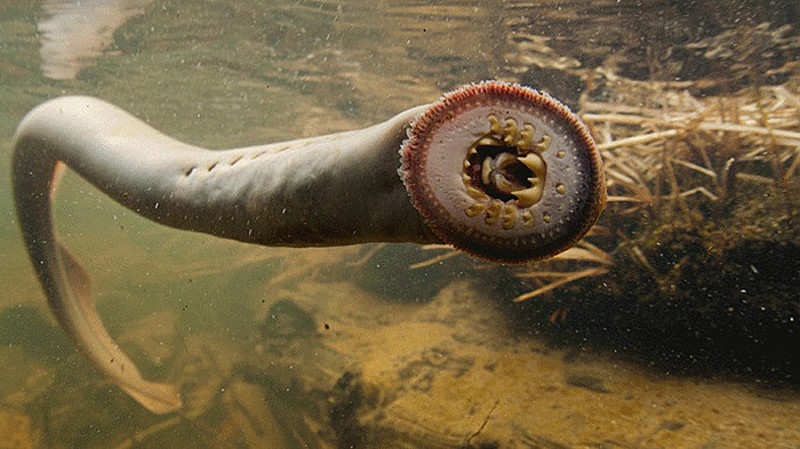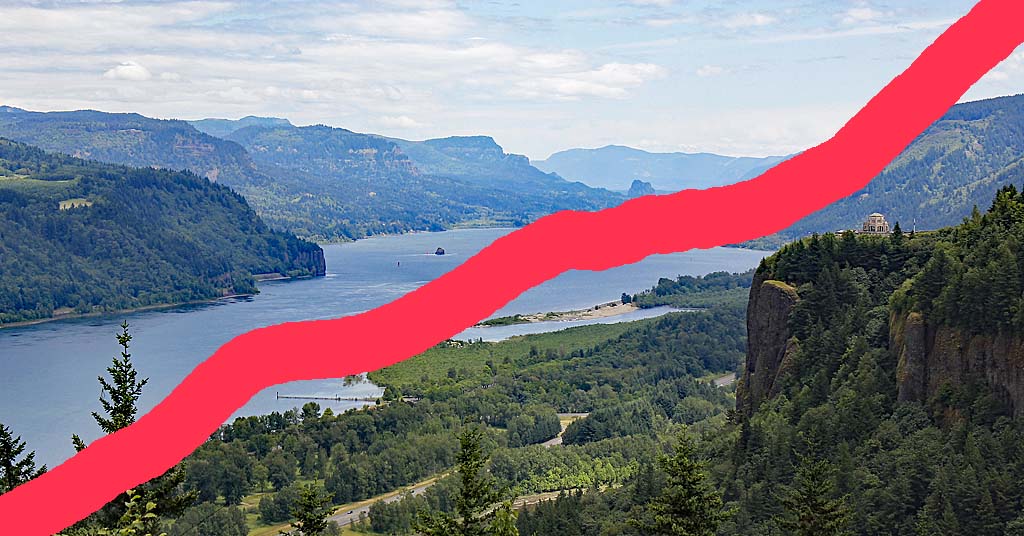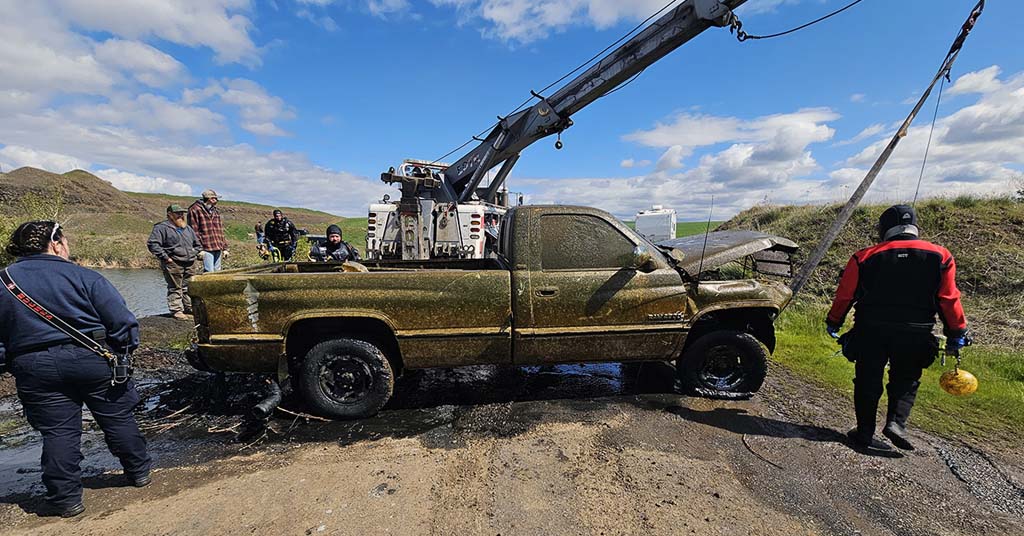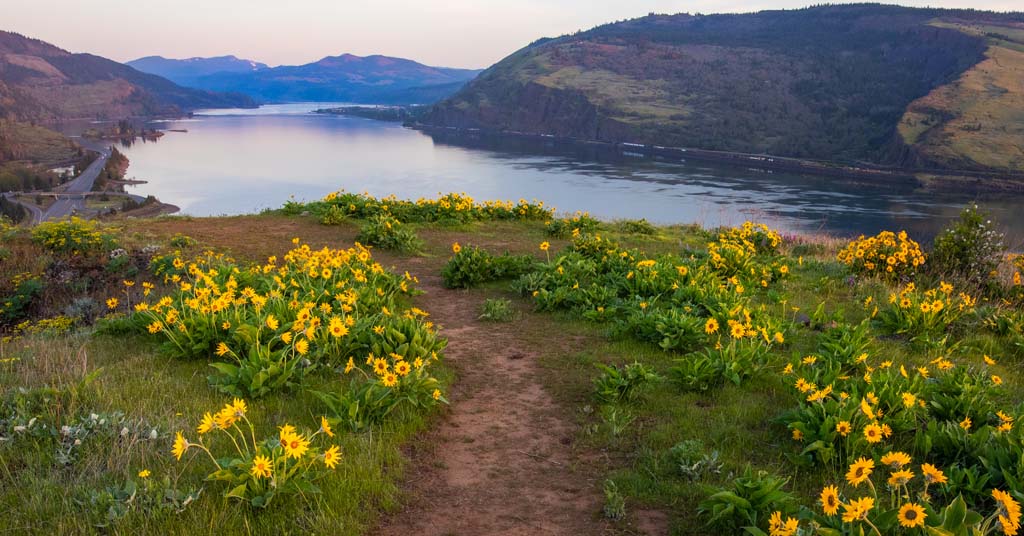
Shoreline reshaped to be more gradual and now extends into the Columbia River. Newly planted willow cuttings and shoreline root-wad provide fish habitat. Bare soil in foreground will receive soil and compost/mulch and be planted with native plants. Photo by Jurgen Hess.
By Jurgen Hess. April 5, 2018. The Piper Road landslide roared down Rock Creek in February of 2007. Hundreds of thousands of yards of rock and debris pushed against Stevenson’s Rock Creek Road Bridge before moving downstream to the Highway 14 and Burlington Northern Railway bridges.
Rock Creek Road Bridge held critical utility, water and sewer lines. Because Stevenson’s sewer treatment plant lay just downstream, Skamania County engineers quickly decided they had to take action to save the bridges and protect the sewer plant. So they dredged 70,000 cubic yards of material to create a deeper and more defined Rock Creek channel. In the rush to do something, they quickly applied for the requisite permits. (The U.S. Army Corps of Engineers requires permits prior to any dredging because of the effects to fisheries and water quality.)
While the Corps of Engineers approved the dredging permit, they did so on the condition that Skamania County would eventually mitigate this ecologically disruptive emergency action. This led to the inception of the Waterfront Restoration Project, which took shape after nearly a decade of planning and collaboration. The City of Stevenson approved the proposal last summer, and crews are now close to completing the first phase of the restoration project.
The project’s primary focus is restoring a quarter-mile section of the Columbia River to “the footprint of the historic riverbank.” In other words, bring it back to a more natural state with enhancements to fish habitat and water quality.

Port Director Pat Albaugh examines recently planted willow cuttings that will provide shade and nutrients for aquatic insects and fish. Photo by Jurgen Hess.
The chosen site stretches 1,250 feet along Stevenson, Washington’s riverfront and lies mere blocks from the business district. The Port of Skamania County took the role of project proponent. “We did this project for the community,” says Port Executive Director Pat Albaugh, “both to help mitigate the Rock Creek dredging and to enhance the Columbia River shoreline.” The Port chose Flowing Solutions, a consulting firm that specializes in stream and river restoration, to engineer the project.
Getting back to a natural shoreline meant first removing over 680 feet of rip rap, pulling out 120 feet of sheet pile retaining walls, and uprooting a forest of invasive blackberries.
Then the work began of re-building the banks using backhoes and bulldozers. Crews placed 35,000 cubic yards of rock, soil, and logs to extend the shoreline 78 feet into the river, creating a gradual slope for shallow water habitat.
Andy Jansky, Principle of Flowing Solutions explains that “the new shallow water habitat will be a rich riparian zone with shade trees to cool water temperature. Leaves and fine soil will provide habitat for aquatic insects.”
Jansky believes that juvenile salmonids moving downstream will be the chief beneficiaries of the reshaped shoreline, but he acknowledges that people can also benefit from the project: “Seeing people take care of nature is important, especially for children.”
Now that the gradual slope is in place, work has begun on the riverbank itself. WKO lumber company donated soil and bark compost to cover up the disturbed areas, and volunteers have already begun planting willow cuttings. More native plants will eventually be planted in the newly shaped areas.
Albaugh says project funding came from multiple sources, including a $250 thousand grant from the Port of Skamania County and a $200 thousand grant from Washington DOT. An additional $110 thousand is covered by the City of Stevenson’s tourism tax dollars.
While this phase of the project will focus solely on restoring riparian habitat, next phases will include enhancements for recreation and the addition of a new public access at Leavens Point. Jansky believes the completed project will provide a good balance between habitat restoration and human use. However, the newly planted and reshaped shoreline will remain off-limits to people for the time being.

The diagram for the Waterfront Restoration Project illustrates restoration areas, future public access areas, and habitat conservation areas (HCA’s). Photo courtesy of Port of Skamania.
Jen and Rick Toledo own The Crossing, a restaurant overlooking the waterfront, and they’ve watched the project move forward step by step. “We love it. We’re thrilled,” Jen says. “It’s cool to watch so many agencies working together for the community. This will control erosion and it’s a win-win.”
Stevenson City Planning Director Ben Shumaker, who reviewed the construction proposal last year, says the City will continue to monitor the work to ensure that it sticks to the plan originally submitted.
“This was a fairly easy project to review,” Shumaker says. “While rooted in disaster, it turned a detriment into an asset for the community.”











